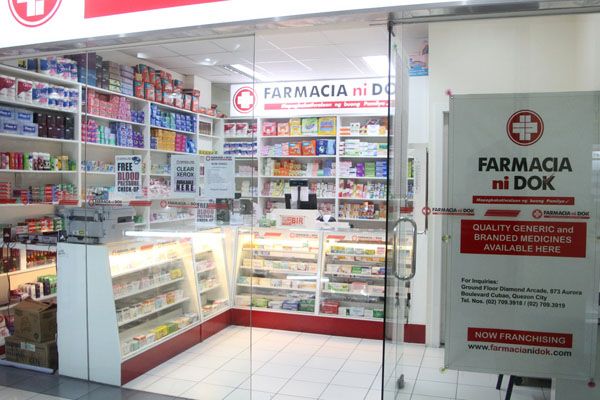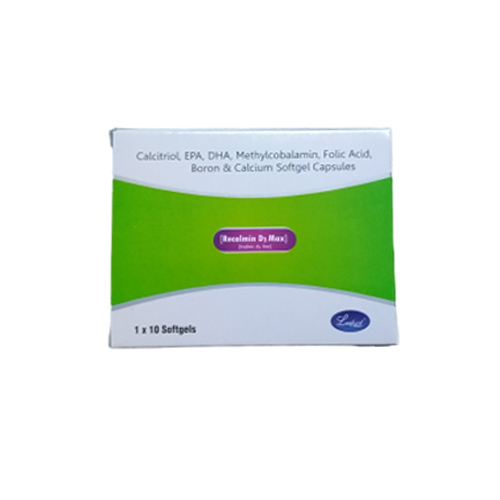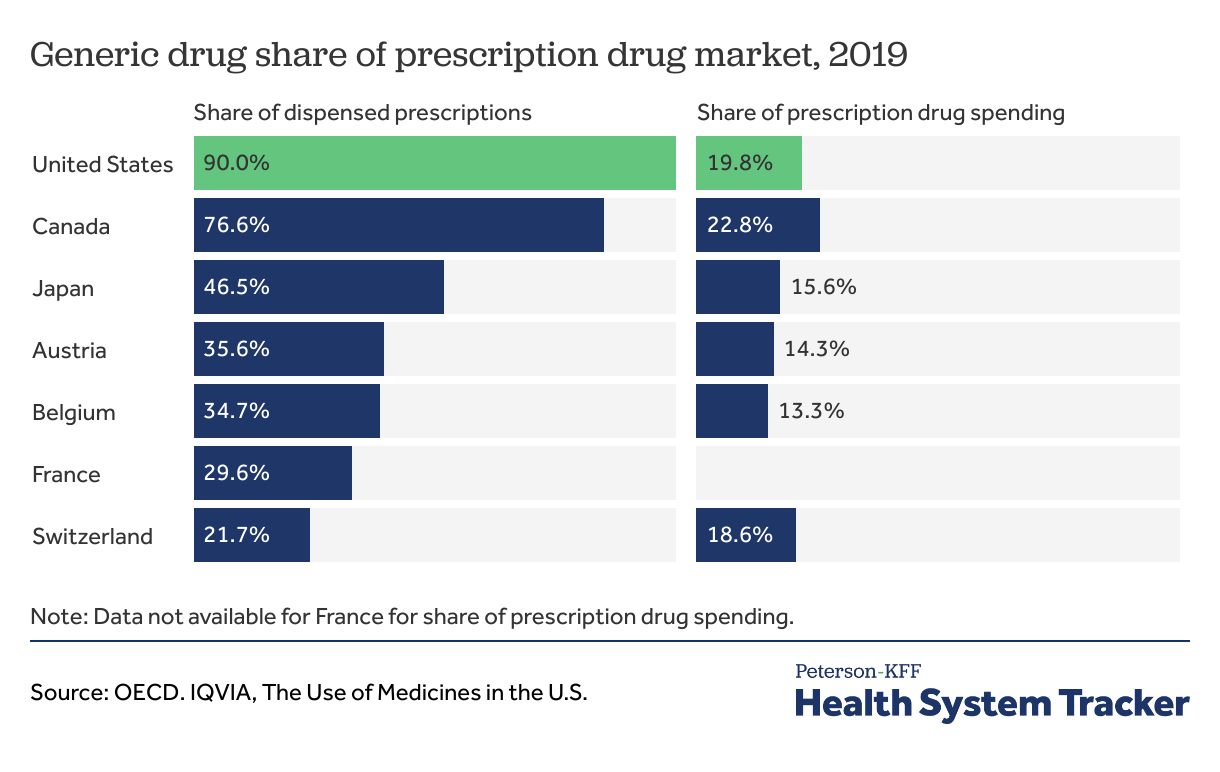
The article discusses the types of medicines available through the scheme, quality standards, certification process, pricing, and benefits to the general public. The article also highlights the challenges faced by the PMBJP scheme in ensuring the availability and accessibility of medicines in remote areas. Furthermore, the article discusses the potential of PMBJP to expand and cover more medicines and medical devices, as well as its role in achieving the goal of universal health coverage in India. Generic medicines play a key role in government healthcare initiatives such as the Pradhan Mantri Jan Aushadhi Yojana (PMJAY), which aims to make essential medicines affordable and accessible to all citizens.
Pradhan Mantri Jan Aushadhi Yojana: A Game Changer for Generic Medicines
ConclusionIn conclusion, the PMBJP scheme has been instrumental in making quality generic medicines available and affordable to all sections of society, especially the economically weaker sections in India. The scheme has been successful in increasing the accessibility of medicines to the masses and has helped in reducing healthcare costs for individuals and the government. However, there are still challenges that need to be addressed, such as ensuring the availability and accessibility of medicines in remote areas. The potential of the PMBJP to expand and cover more medicines and medical devices is promising, and it can play a crucial role in achieving the goal of universal health coverage in India. AbstractThis article provides an overview of the Pradhan Mantri Bhartiya Janaushadhi Pariyojana (PMBJP) scheme in India. The PMBJP scheme aims to make quality generic medicines available and affordable to all sections of society, especially the economically weaker sections.
- From early efforts to make essential medicines affordable to becoming one of the world’s largest producers of generics, India’s generic pharmaceutical industry has a rich history.
- On the other hand, India’s policy and lawmakers have identified generic competition as the strongest and most effective force to reduce drug prices.
- The PMBJP scheme aims to make quality generic medicines available and affordable to all sections of society, especially the economically weaker sections.
- Today, India is a main supplier of vaccines to UNICEF and to the Ministries of Health in numerous countries.
- As a leading Jan Aushadhi supplier, we are committed to making high-quality, affordable medicines available to healthcare providers and patients across India.
- It is clear that since the ancient times India had a very systematic, scientific and rational approach to the treatment of diseases.
- The generics prove to be a great alternative to branded medicines as they are bioequivalent or identical to branded drugs with comparable therapeutic action.
Health Care Devices
Thus, access to low-priced generic drugs is very critical in ensuring health care at affordable prices. Generic medicines are drugs that contain the same active ingredients as branded medicines, but are sold under their chemical name. They are equivalent in dosage, safety, strength, quality, and intended use, offering the same therapeutic benefits at a much lower cost. Continued focus on strict regulatory standards is essential to ensure that all generic medicines meet the required quality and safety benchmarks. Generic drugs in India must meet strict quality standards set by the Central Drugs Standard Control Organization (CDSCO). Generic medicines are widely available and are often produced by multiple manufacturers once the patent for the original drug expires.
Are generic medicines as effective as brand-name ones?
This uncompromising stand has been demonstrated through the granting of compulsory licence in 2012 to an Indian manufacturer to produce a cancer drug, the patent for which was held by the German company Bayer. Bayer’s pricing had made the drug unaffordable to poor cancer patients in India, Africa and elsewhere. Presently over 80 per cent of the antiretroviral drugs used globally to combat AIDS are supplied by Indian pharmaceutical firms. The Mantras in these ancient texts contain a wealth of information regarding herbs, metals, medicines, diseases and treatments. They speak of the astounding properties and powers that herbs and plants possess to cure diseases.
The infographic below highlights the sky-high prices of patented drugs in the US vs low-cost Indian generics.
Unlike branded medicines, which spend significantly on advertising and promotion, generic drugs rely less on branding and more on their efficacy, resulting in reduced costs. The government has proposed amendments to the Drugs and Cosmetics Rules to ensure availability of generic drugs at reasonable prices and to promote the use of generic medicines. To ensure high quality, medicines are procured from WHO Good manufacturing practice (GMP), Current Good Manufacturing Practice and CPSUs manufacturers for supplying to Pradhan Mantri Bhartiya Janaushadhi Kendras. Only after being certified by these laboratories, medicines are dispatched to C&F agents, Distributors and JAKs. In contrast to India’s stricter patentability criteria, the U.S. allows the practice of ‘evergreening’ that helps delay generic competition and keeps prices high.
How do generic medicines support government healthcare initiatives in India?
Under the National Pharmaceutical Pricing Policy, as on December 15, 2016, ceiling price of 853 formulations are under price control. It has also introduced a range of fiscal incentives to promote domestic manufacturing, including the reduction of inverted duty structure and basic customs duty. Pharmaceuticals is one of the fastest growing contributors to “Make in India” campaign since its inception. India also has a large pool of talented scientists and engineers who have the potential to lead the industry ahead to greater heights.
Some of the key benefits of the Jan Aushadhi Yojana include:

Such patents are routinely granted in the US and other countries, but India chose to prioritise access to medicines over the business interests of the pharmaceutical industry. Yes, generic medicines are available for a wide range of diseases, including chronic conditions like diabetes, hypertension, and infectious diseases. Branded drugs are developed after years of research and clinical trials, making the original manufacturer the exclusive seller for a specific time through a patent.
Why Are Generic Medicines Cheaper?
The scheme is being implemented by the Pradhan Mantri Bhartiya Janaushadhi Pariyojana (BPPI), under the administrative control of the Department of Pharmaceuticals and the Ministry of Chemicals and Fertilisers. As of FY23, it covers 1,759 medicines and 280 surgical & consumables in all key therapeutic categories such as anti-infective, anti-allergic, anti-diabetics, cardiovascular, anti-cancers, and gastrointestinal medicines. India should also enter into international partnerships and agreements in the pharmaceutical sector so that we learn from the best and adopt the best protocols and practices.
- It is designed and developed by National Informatics Centre (NIC), Ministry of Electronics & Information Technology, Government of India.
- This makes them more accessible to patients and healthcare providers across different regions.
- Branded drugs are developed after years of research and clinical trials, making the original manufacturer the exclusive seller for a specific time through a patent.
- The amendment reintroduced product patents for medicines, but India included provisions such as compulsory licensing, which allowed the production of generics for life-saving drugs in cases of public health emergencies.
- Furthermore, the article discusses the potential of PMBJP to expand and cover more medicines and medical devices, as well as its role in achieving the goal of universal health coverage in India.
How do generic medicines promote health equity?
The Government of India has taken up a number of initiatives to create an ecosystem that fosters manufacturing and have identified a few key areas. ‘Make in India’ is one of the key programmes launched by the government to boost the economy and the aim is to transform India into a global manufacturing hub. This is an eloquent testimony to the competence of the Indian pharma sector in terms of quality and pricing. The Minister for Excise and Liquor Prohibition, Uttar Pradesh, Shri Jai Parata Singh and several dignitaries from fields of medicine, pharmaceuticals and other were present on the occasion. Saying that pharmaceuticals was a priority area for Government, Shri Naidu stressed the need to further harness the potential of the sector by use of technology, innovation and research. To bring down the healthcare budget of every citizen of India through providing Quality generic Medicines at Affordable Prices.
How can I inquire about a specific medicine on Medkart Pharmacy?
The initiative aims to make essential medicines more accessible and affordable through resolute PMBJK outlets. The Jan Aushadhi initiative will make available quality drugs at affordable prices through dedicated stores selling generic medicines which are available at lesser prices but are equivalent in quality and efficacy as expensive branded drugs. Medicines in almost every therapeutic category are sold primarily as branded drugs, at disproportionately high prices.
These programmes benefit more than 15 million people who are living with HIV/AIDS. This allowed for the production of low-cost, generic versions of medicines that were patented in other countries. Generic drugs have the same active ingredients as the brand-name drugs, ensuring the same therapeutic benefits. However, the inactive ingredients (such as fillers, colorants, or preservatives) may vary, but they do not affect the drug’s performance.

As of December 2023, the government has already established 10,006, with 206 medicines and 13 surgical equipment have been newly added this year in Jan Aushadhi stores in the country. Generic medicines play a crucial role in making healthcare more affordable and accessible. They help reduce overall healthcare costs, promote health equity, and support government initiatives like the Pradhan Mantri Jan Aushadhi Yojana (PMJAY). Yes, generic medicines are required to meet the same safety, quality, and efficacy standards as branded medicines. They must be approved by regulatory authorities like the Central Drugs Standard Control Organization (CDSCO) in India. The availability of generic drugs fosters competition among pharmaceutical companies, which drives innovation and encourages more affordable pricing across the board.
There are more than 700 medicines; more than 150 surgicals and consumables are available at affordable prices for all at more than 4000 ‘Jan Aushadi Kedras’ across the nation. ‘Pharma Jan Samadhan’, a customer grievances redressal system was launched and a mobile application – ‘Pharma Sahi Daam’ that provides real-time information to consumers on prices of Scheduled/Non-scheduled medicines has also been introduced. Our medications are sourced from Indian certified manufacturers and meet global regulatory standards. We help you to access high quality generic medicine and overcome financial barriers. How the law works is borne out of the patent decision in 2005 which rejected the Swiss pharmaceutical company Novartis’ attempt to patent the salt/crystalline form of ‘Imatinib,’ a life saving medicine for treating chronic myeloid leukemia.
Regarding non-communicable diseases (NCDs), he outlined considerable progress in the National Programme for Prevention and Control of Cancer, Diabetes, Cardiovascular Diseases, and Stroke. The government provides free or highly subsidised treatment for NCDs at public hospitals, with major diseases covered under the Ayushman Bharat Pradhan Mantri Jan Arogya Yojana (AB PMJAY). The scheme, benefiting approximately 55 crore people, offers US$ 5,886 (Rs. 5 lakh) annual health cover for secondary and tertiary hospitalisation. Additionally, the scheme has extended coverage to senior citizens aged 70 and above. As of November 30, 2024, 218 AMRIT pharmacies operate across 29 states and Union Territories, offering discounted medicines and surgical items.
Under the Scheme, dedicated outlets known as Pradhan Mantri Bhartiya Janaushadhi Kendras (PMBJKs) are opened to provide generic medicines at cheaper rates to the citizens. Government has set a target to open 10,500 Kendras across the country by March 2025. As a leading Jan Aushadhi supplier, we are committed to making high-quality, affordable medicines available to healthcare providers and patients across India. Contact us today for bulk orders and learn more about how we support the mission of affordable healthcare.
As previously mentioned, generic medicines are far cheaper than branded drugs, allowing patients to afford treatments for chronic conditions like diabetes, hypertension, and cardiovascular diseases without financial strain. « Making quality medicines available at affordable prices has been a key challenge. We will reinvigorate the supply of generic drugs. 3,000 Stores under Prime Minister’s Jan Aushadhi Yojana will be opened during 2017. » This public health approach to setting strict patent standards is in line with international trade rules and encourages timely entry of affordable generics into the market, driving prices down.
The journey of generic medicines in India has been pivotal in transforming the country’s healthcare landscape. From early efforts to make essential medicines affordable to becoming one of the world’s largest producers of generics, India’s generic pharmaceutical industry has a rich history. Here’s a look at the key milestones in the development of generic medicines in India. The Vice President abiraterone price in usa asked Pharma companies to go above and beyond their CSR mandates to provide life saving and other essential drugs to those who cannot afford them. He said that it was essential for a country like India to provide healthcare and medicines at affordable prices. In developing countries, India is rendering yeoman service by providing access to life saving medicines at affordable prices, he added.
Generic medicines in India must adhere to the same regulatory standards as branded drugs. The Central Drugs Standard Control Organization (CDSCO) oversees the approval and regulation of generic medicines to ensure they meet high standards of safety, efficacy, and quality. This regulatory oversight helps maintain public trust in generic drugs and ensures that they are as effective as their branded counterparts.
- The Atharva veda is a treasure trove of knowledge and wisdom in the field of medicine.
- Dr. Yussef Hamied from India electrified the world by announcing that the generic company Cipla would manufacture and supply the triple fixed-dose combination of HIV antiretrovirals at $1 a day, a 99.99 percent price cut.
- We provide a wide range of specialty drugs, from anti-viral treatments to nephrology drugs, addressing complex medical needs.
- You can also buy essential medical products, branded or generic medicines online from medkart official website.
- The government has proposed amendments to the Drugs and Cosmetics Rules to ensure availability of generic drugs at reasonable prices and to promote the use of generic medicines.
- This has resulted in substantial savings to common man as prices of generic medicines being sold in the PMBJP Kendras is lower by 50% to 90% of the equivalent branded medicines.
- The government and the Pharma sector in unison have managed to effectively harness the power of Information technology to improve efficiency.
Indiangenericprice believes that no one should be deprived of essential healthcare, regardless of their location or financial situation. Our goal is to transform global healthcare access by breaking down barriers through convenience and affordability. A ‘public first’ approach to policy, strict medicine patent law and doctors who have used reverse-engineering to introduce generic drugs, are some of the reasons that India has emerged as the ‘pharmacy’ of the developing world.
Generic medicines play a crucial role in promoting health equity by ensuring that medications are accessible to all segments of the population, regardless of socioeconomic status. This is particularly important in a diverse country like India, where disparities in access to healthcare can be significant. The production of affordable generics helped address critical healthcare needs in India, particularly in treating infectious diseases like tuberculosis and malaria, which were prevalent across the country. Pharma companies should go above and beyond their CSR mandates to provide life saving and other essential drugs to those who cannot afford them. Quality medicines at affordable prices are now available to the poor and disadvantaged through the “Pradhan Mantri Bhartiya Jan aushadhi Kendras”.
It is quite heartening to note that the Pharma sector is out-performing most other sectors in achieving consistently high growth. The Pharma industry has posted a robust, double-digit growth over the last few years. The industry was worth US $36.7 Billion in 2017 and is projected to grow to US $55 Billion by 2020. The Atharva veda is a treasure trove of knowledge and wisdom in the field of medicine. It is clear that since the ancient times India had a very systematic, scientific and rational approach to the treatment of diseases. I have been buying prostate cancer medicine Abiraterone for my dad regularly with them.

